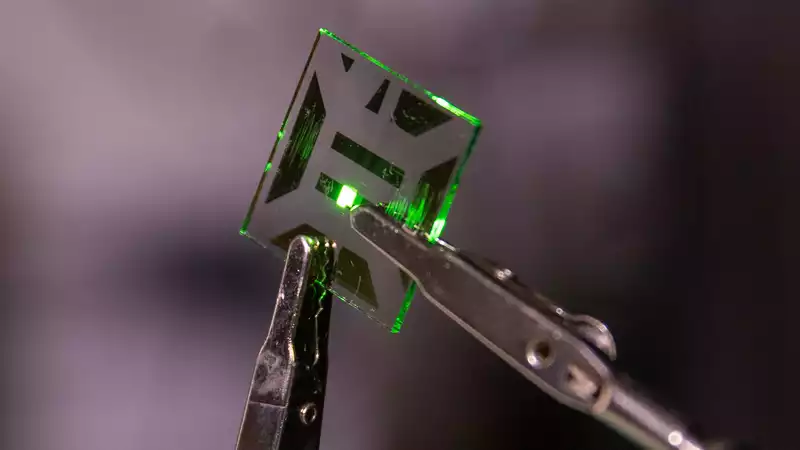A new breakthrough in electrode design may be the answer to brighter OLED TVs and displays and improved battery life in laptops and cell phones, thanks to nanotech improvements in the light-emitting parts of OLED (organic light-emitting diode) displays, up to 20% more light with the same power input.
The new electrode design does not produce more light, but it does improve the radiation of that light. According to a blog post from the University of Michigan, the new approach prevents light from being trapped in the light-emitting portion of the diode.
In current diode designs used in OLED TVs and display panels, as much as 80% of the light produced by the light-emitting diode can be trapped, with only light emitted at a near-vertical angle from the device being projected toward the viewer, and the rest reflected back onto the device The rest is reflected back to the device.
"We want to solve the root cause of this problem," says L. Jay Guo, one of the paper's authors and a professor of electrical and computer engineering at the University of Michigan.As detailed in a paper published in Science Advances, the new design does just that. By using a nanoscale transparent silver layer as the anode instead of the traditional indium tin oxide, as much as 20% of the trapped light is freed up, allowing more light to be emitted directly from the light-emitting diode to the viewer. This has resulted in a brighter, more vivid display without the need for high power consumption.
Further improvements may be seen once manufacturing of the new design begins. According to Changyeong Jeong, co-author of the paper and a PhD candidate in electrical and computer engineering at the University of Michigan, "Industry may be able to free up 40% more light, in part, by replacing conventional indium tin oxide electrodes with our transparent nanoscale layer of silver." [Even better, this new process does not require a complete change in the way OLED displays are manufactured. Says Guo, "With our approach, everything can be done in the same vacuum chamber."
The bright emission from OLED displays will solve one of the problems OLED TVs and panels have faced for years, namely the general dimness when compared to backlighting technologies such as LED TVs.
As the high dynamic range (HDR) format became more popular in TVs and cell phones, device manufacturers took steps to increase the brightness produced by the panels by overdriving them, but this resulted in a shorter usable life of the OLED panels and an increased burn-in The risk of burn-in increased.
While no announcements have been made regarding industry adoption of this new technology, the ease of manufacture and promise of increased efficiency of the new diode design will make this improvement very attractive to device manufacturers. The University of Michigan has applied for patent protection for this new technology.










Comments